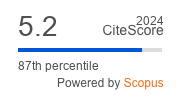Article | Open Access
Facebook Campaigning in the 2019 and 2021 Canadian Federal Elections
| Views: | 3521 | | | Downloads: | 2573 |
Abstract: Canada’s federal elections in 2019 and 2021 produced a similar outcome—a minority Liberal government. These back-to-back elections provide an ideal context to understand trends in digital campaigning strategies and assess how the pandemic influenced campaigns’ use of social media. We examine how the three leaders of the major parties used Facebook in 2019 (n = 712) compared to 2021 (n = 979). The Conservative leader O’Toole posted more frequently than other candidates in 2021, fitting with the equalization theory of digital campaigning. In 2019 and 2021, the incumbent prime minister, Trudeau, received the most user engagement on his Facebook posts despite calling a snap election during a pandemic and less than two years into his mandate. These findings support normalization theories of digital campaigning with evidence of an accumulating incumbent advantage. The Covid-19 pandemic sidelined attention to climate change. We argue that the Liberal government owned both issues; we expected Trudeau to have greater attention to and user engagement for these policy posts. In general, Facebook posts about the pandemic yielded greater user engagement than posts that did not mention the pandemic. Candidates tested new campaign strategies in 2021, particularly making calls to interact with them; these posts yielded higher user engagement than posts that did not include a call to interact. While candidates used new social media campaign strategies, voter turnout declined from 2019 to 2021. These findings have implications for other democratic systems and the future of digital campaigning.
Keywords: Canada; climate change; election; Facebook; mobilization; pandemic; social media; user engagement
Published:
© Shelley Boulianne, Anders Olof Larsson. This is an open access article distributed under the terms of the Creative Commons Attribution 4.0 license (http://creativecommons.org/licenses/by/4.0), which permits any use, distribution, and reproduction of the work without further permission provided the original author(s) and source are credited.


